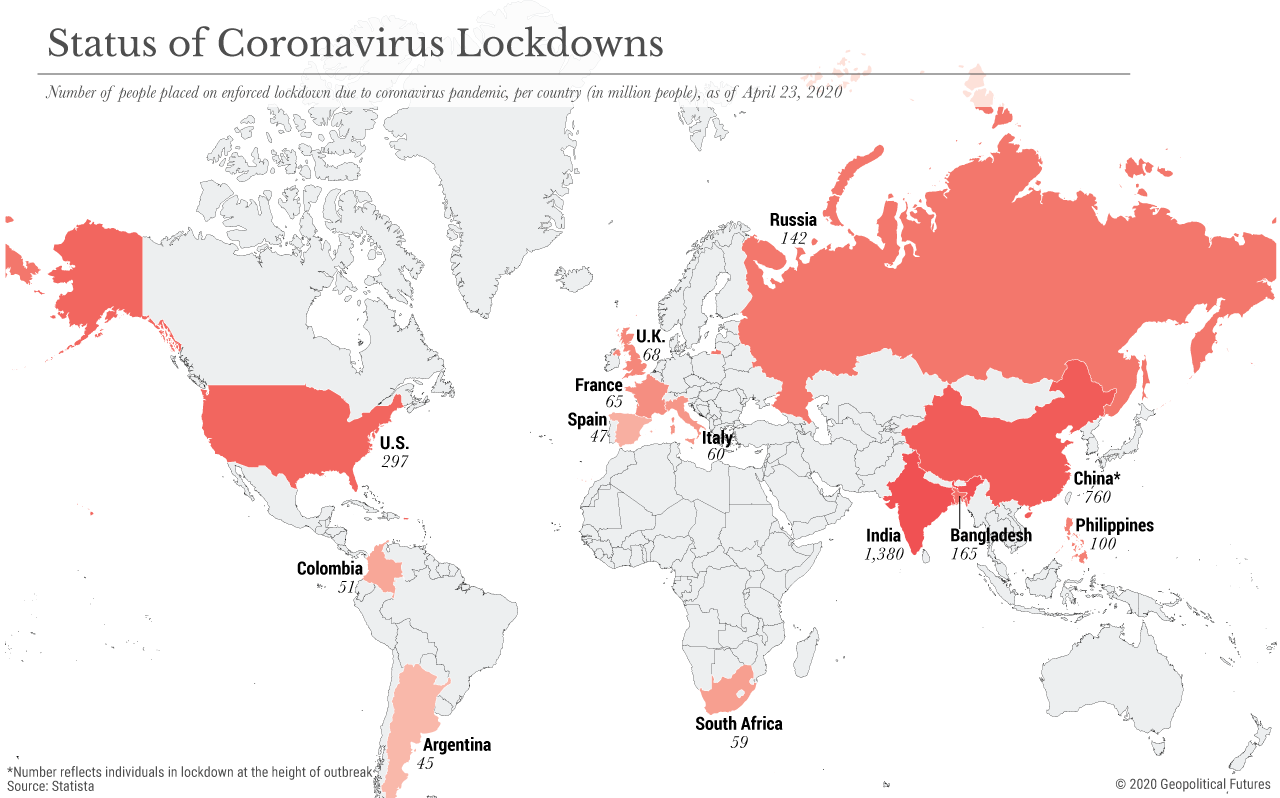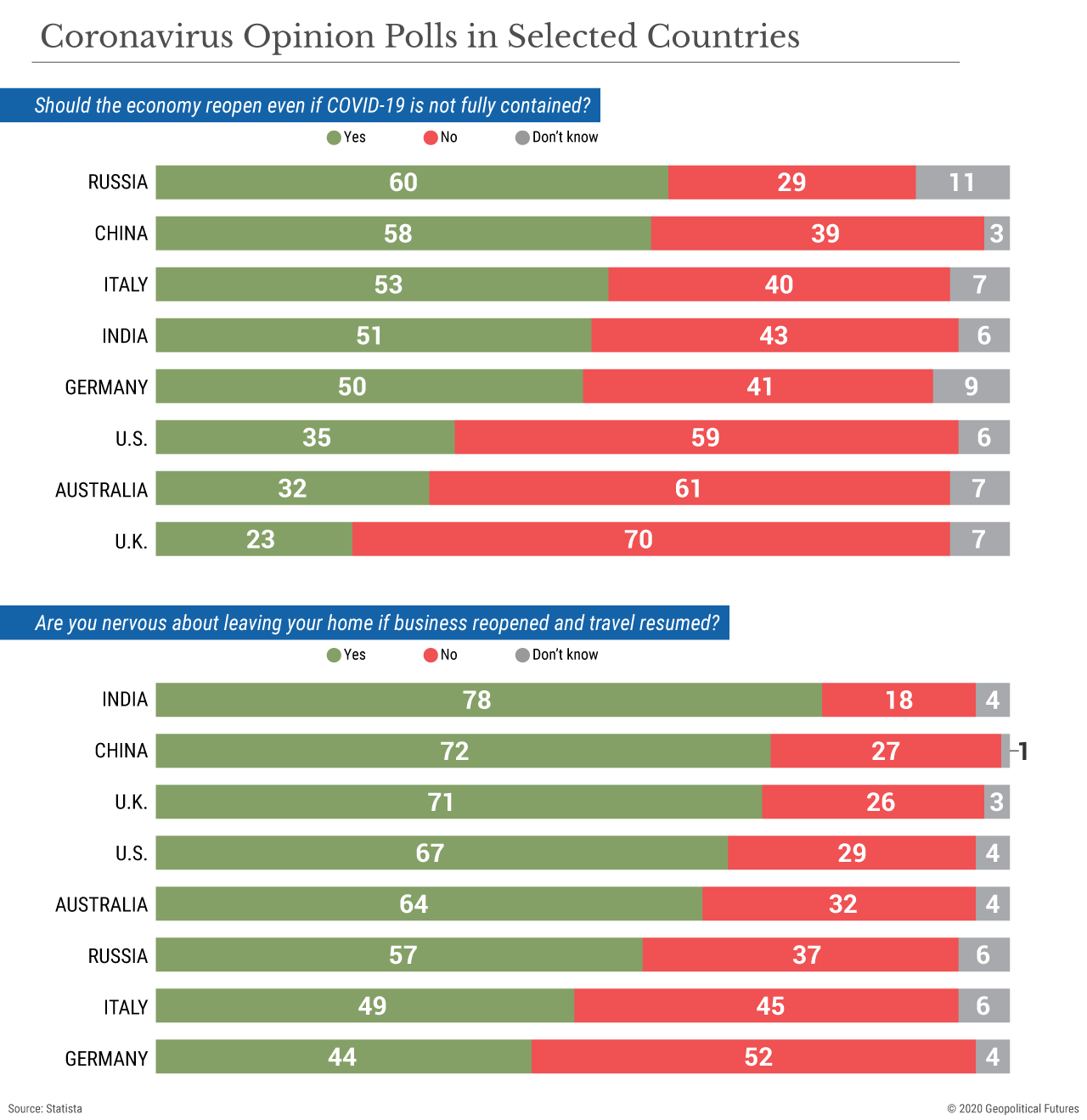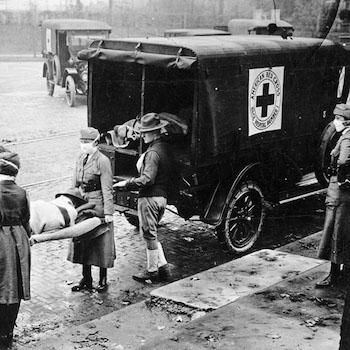This article was originally published at Geopolitical Futures. The original is here.
When a patient dies in a hospital, it’s not uncommon for doctors to convene what is known as a morbidity and mortality conference, the goal of which is to determine what went wrong and why. In the months and years following a national crisis, we engage in a somewhat similar process. Over time, official investigations are carried out, and political leaders, the media and the public initiate ad hoc debates meant to arrive at a general understanding of the primary cause of the crisis and what steps need to be taken to prevent something like it from ever happening again.
After 9/11, we learned that the American homeland was vulnerable to direct attack by actors from the Middle East. After the Great Recession of 2008, we learned that mortgage-backed securities are not automatic moneymakers and that subprime mortgages are a potential disaster-in-waiting if real estate values don’t go up. Similarly, the COVID-19 pandemic will offer several lessons.
Lesson #1: There is an optimal balance in response to a pandemic that is somewhere between the two extremes of “total lockdown” and “totally open society.” The most important question is: Were lockdowns necessary to stop the spread of the coronavirus? From a scientific perspective, this is unanswerable because there were no consistent control (i.e., no lockdown) and experimental (i.e., total lockdown) groups. There was no alternative universe in which we didn’t implement lockdowns to compare to our own.
Largely for domestic political reasons, both sides of the debate will claim to have been correct. Those believing the worst-case scenario COVID-19 models that predicted hundreds of thousands or millions of American deaths will say that lockdowns and extreme social distancing prevented a complete catastrophe. Those who do not believe the worst-case scenario was inevitable without a lockdown will claim that the models were exaggerated or, at the very least, that the ends did not justify the means.

From a scientific approach, the only conceivable way to resolve this dispute will be to rely on yet more models – the very same models whose validity is under question. Beyond the sophisticated speculation provided by models, science tells us that we can never have a certain answer to the most important question raised by the pandemic. From a geopolitical standpoint, this poses a substantial problem. Governments will want to know how to act the next time a pandemic occurs, and the public could get angry if it perceives that no lessons were learned.
Lesson #2: Putting the recommendations of scientists, public health officials and academics into practice often clashes with other geopolitical realities. Whenever there is a crisis, there is a strong tendency to turn toward experts or technocrats for solutions. The trouble with experts is that they often struggle to place their important work into a bigger picture. In this case, those favoring harsh lockdowns claimed to be “following the science.” Indeed, one scientist from Imperial College said that the U.K. would need to maintain “a significant level of social distancing, probably indefinitely until we have a vaccine available.” While such a statement may be scientifically sound, it is not feasible since it fails to incorporate the realities of everyday life. Another problem is that “the science” does not provide unambiguous guidance. For instance, there is good reason to believe that there may never be a particularly effective vaccine against COVID-19. The reason is fundamentally biological: Coronaviruses might not induce lifelong immunity in humans.
Additionally, there are other factors than science involved in a government’s response to a pandemic, such as legal, ethical and economic considerations. Allowing any one factor to dominate policymaking can produce an undesirable outcome. The COVID-19 pandemic morphed into a major geopolitical event and, therefore, the tools of geopolitical analysis became ever more relevant. That is likely why Winston Churchill famously said, “Scientists should be on tap, but not on top.” Rightly or wrongly, in this case, many in the public will perceive that the science factor was prioritized, to such an extent that economic health was subordinated to public health. Therefore, the scientific community, like politicians, will be held accountable for their actions and recommendations. Almost inevitably, this will erode public faith in the medical establishment.
Lesson #3: The general public must face the price of life-or-death trade-offs. When government officials evaluate the pros and cons of their proposed actions, they often do so through the lens of opportunity cost. Resources are not unlimited, and each action comes at a cost. Often, the best way to measure these costs is to first convert whatever is being measured – time, productivity, opportunities – into dollars and cents. This can even be done with human health and life itself.
Many people say that one cannot put a price tag on human life. This is true from a moral or philosophical perspective. In the eyes of God, all of us are equal and intrinsically invaluable. (Even atheists are unlikely to question that conclusion, though they obviously don’t agree that God is the source of our intrinsic value.) In the eyes of an economist, however, we are neither equal nor invaluable.

How does one begin to put a price tag on a human life? A simple thought experiment demonstrates how easy it is. Pretend that you’re the mayor of a small town. There’s a dangerous intersection that results in one car crash fatality every year. A company approaches you with a solution: By redesigning and rebuilding the intersection, it can guarantee no more car crashes. The only problem is that the infrastructure project costs $100 million. Considering that your small town’s budget is far less than that, the city couldn’t afford it without a massive tax increase. You propose that tax increase to your citizens, who reject it overwhelmingly. The citizens have spoken: The lives of those who will be killed in accidents at the intersection are not worth $100 million.
Even though we don’t like to admit it, we make personal decisions like this all the time. A family would likely spend itself into bankruptcy to save the life of a child but not the life of their 95-year-old grandfather. Why? Because we know that a child potentially has a long, bright and prosperous future ahead of her, but grandpa does not. Life insurance companies make calculations like this on a daily basis. (A website run by the non-profit organization Life Happens features a human life value calculator that determines how much your life is worth to your family, strictly in financial terms.) For what it’s worth, various U.S. government agencies value a life between $9 million and $10 million.
The key is to remember that we are talking about economic value rather than moral value. There is always space for a moral consideration in geopolitics, but it too must be considered along with other factors. This must be kept in mind in regard to the coming debate over whether the COVID-19 lockdown was worth it. One way that society is wrestling with that question is by comparing the costs of the lockdown (e.g., the decrease in gross domestic product) to its benefits (e.g., the economic value of the lives saved). Simultaneously, we must also consider that the lockdown itself may be directly or indirectly responsible for excess deaths due to suicide or cardiovascular events, cancer and other causes, some of which may be due to fear of going to the hospital. While governments have regularly confronted these dilemmas when pondering military action, doing so from a public health perspective was in many ways uncharted territory.
Lesson #4: The global supply chain requires redundancies because interdependence is not enough. Of all the lessons on offer from COVID-19, this one is the most obvious. Over the past few months, we learned that a domino effect, beginning with the halting of China’s economy, can trigger logistical nightmares that can collapse supply chains and ruin economies. Nations also received a wake-up call on just how much they depend on foreign countries for products vitally important to their populations’ well-being. Even products that are a national security interest, such as pharmaceuticals and medical devices, are at least partially manufactured abroad. Finally, we learned that our allies will hoard resources in a crisis. Italy, in particular, learned that lesson the hard way about the EU.
There will be tremendous pressure on governments to create national stockpiles of vital materials, create redundancies in their supply chains and be more self-sufficient wherever possible. That could require onshoring some manufacturing capabilities that are deemed vital to the national interest. If that proves too impractical or economically inefficient, another possibility would be to create global supply chain alliances between trusted countries. Of course, any such alliance must be constructed in a way that precludes the fiasco that briefly played out in the EU. Thus, as countries and multinational corporations prioritize self-reliance after COVID-19, they will look to increase their production capacity for crucial supplies and medicine and will be more selective in building trade affiliations with the countries they trust the most. In other words, supply chains increasingly will be based on security and resilience.
© 2020 Geopolitical Futures. Republished with permission.




